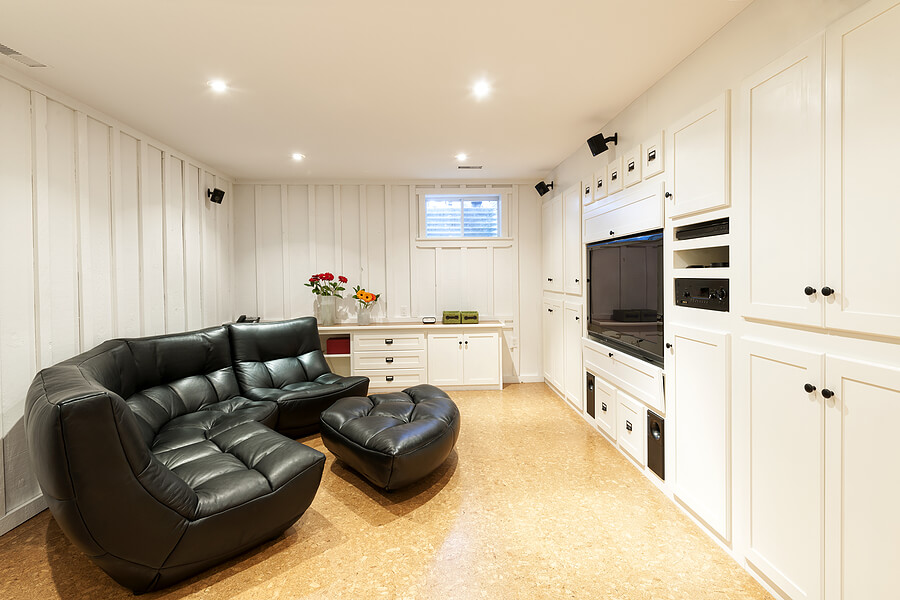As we approach 2025, entertainment centers for the home are undergoing a dramatic transformation, reflecting our evolving relationship with technology and home leisure. The traditional entertainment center, once dominated by bulky television cabinets and DVD storage, is being reimagined for modern living. This year’s remodeling trends focus on creating versatile, tech-integrated spaces that seamlessly blend functionality with aesthetic appeal.

The concept of the “smart entertainment wall” is gaining significant traction. Rather than traditional media cabinets, homeowners are opting for fully integrated wall systems that incorporate hidden wiring channels, built-in speakers, and programmable ambient lighting. These systems allow for a clean, minimalist appearance while housing sophisticated technology. The trend is moving away from showing off equipment toward concealing it entirely, creating a more sophisticated and serene living space.
Modular design is becoming increasingly popular, with flexible furniture systems that can be reconfigured as needs change. These systems typically feature floating components that can be rearranged without damaging walls, perfect for homeowners who like to refresh their space periodically. Some innovative designs include movable panels that can hide or reveal different sections of the entertainment center, allowing the space to transform from a media room to a formal living area with minimal effort.
Sustainability is another key factor influencing entertainment center design. Manufacturers are incorporating recycled materials, sustainable woods, and eco-friendly finishes. Bamboo and reclaimed wood are particularly popular choices, offering both environmental benefits and aesthetic appeal. These materials are often combined with metal accents in brushed brass or matte black finishes, creating a contemporary look that’s both sophisticated and environmentally conscious.
The integration of virtual reality spaces is an exciting development in entertainment center design. Dedicated areas for VR gaming and experiences are being incorporated into traditional media rooms. These spaces feature specialized storage for VR equipment, padded flooring for safety, and proper lighting for optimal headset tracking. Some designs include retractable barriers or sliding panels that can quickly convert an open area into a safe VR zone.
Acoustic optimization is receiving more attention than ever before. Entertainment centers are being designed with sound absorption and diffusion in mind, featuring specially engineered panels that can be disguised as decorative elements. These acoustic treatments help create the perfect sound environment for both movie watching and music listening, while maintaining an aesthetically pleasing appearance.
Multi-functional spaces are becoming the norm rather than the exception. Modern entertainment centers often include workspace components that can be easily hidden when not in use. Pull-out desks, concealed charging stations, and built-in videoconferencing setups allow these spaces to transition seamlessly from entertainment to work modes. This dual functionality is particularly valuable as remote work continues to be common in many households.
Biophilic design elements are being incorporated to create a more natural and welcoming environment. Built-in planters, living walls, and designated spaces for indoor plants are becoming standard features in entertainment center designs. These elements not only improve air quality but also create a more relaxing and enjoyable atmosphere for entertainment spaces.
Climate control is another consideration being built into modern entertainment centers. Integrated ventilation systems help protect expensive electronics while maintaining comfortable temperatures for users. Some designs include small, quiet fans hidden behind decorative panels, while others incorporate more sophisticated climate control systems with humidity regulation for optimal equipment preservation.
Storage solutions are evolving to meet changing needs. With the decline of physical media, traditional storage spaces are being repurposed for gaming equipment, smart home hubs, and other modern devices. Hidden drawers with built-in charging capabilities, temperature-controlled cabinets for electronics, and adjustable shelving systems offer flexibility for future technology upgrades.
Lighting design plays a crucial role in modern entertainment centers. LED strip lighting, color-changing ambient systems, and task lighting are being integrated in ways that enhance both the viewing experience and the room’s overall ambiance. Many systems can be controlled via smartphone apps or voice commands, allowing users to create perfect lighting scenarios for different activities.
Looking ahead, entertainment centers are becoming more than just TV stands – they’re evolving into sophisticated home technology hubs that can adapt to changing needs while maintaining aesthetic appeal. The focus is on creating spaces that are both functional and beautiful, with the flexibility to accommodate future technologies while remaining timeless in design.
As we move through 2025, these trends in entertainment center design reflect our broader desire for spaces that can support multiple activities while maintaining organization and style. Whether it’s hosting movie nights, enabling remote work, or creating immersive gaming experiences, today’s entertainment centers are truly at the heart of the modern home.


